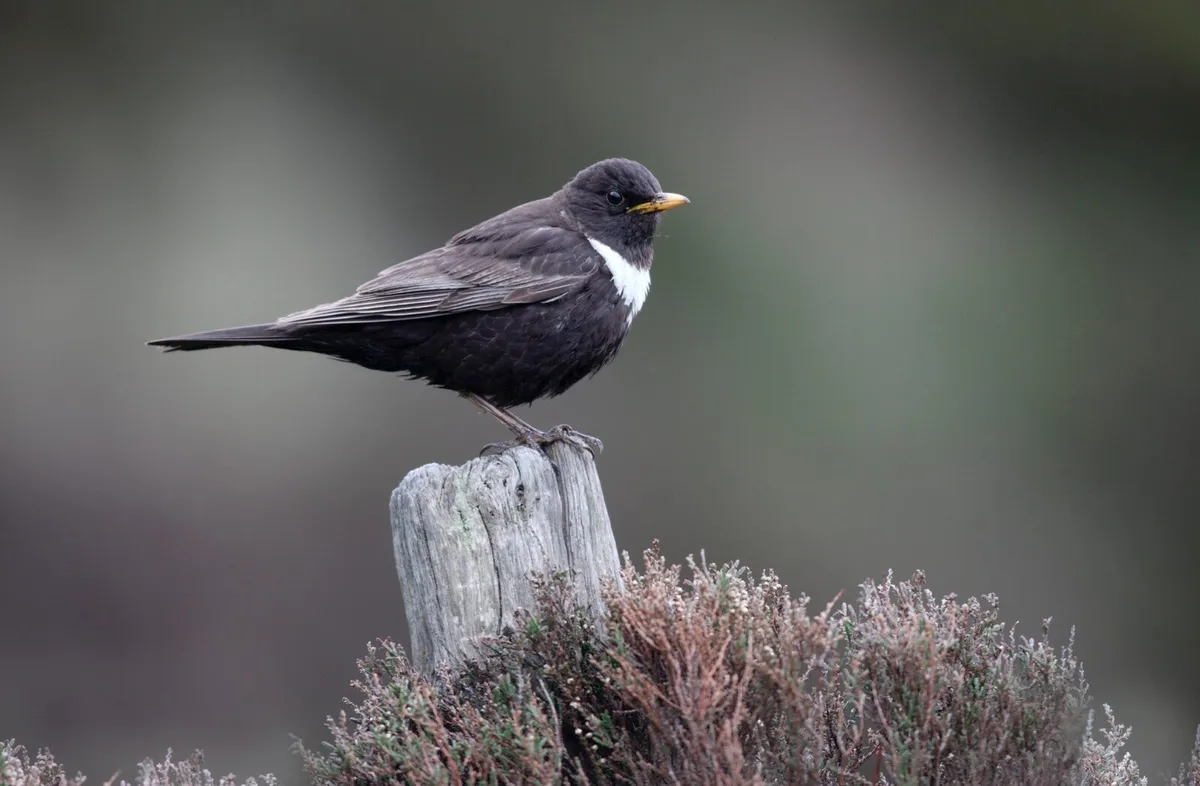The jagged peaks that soar over Cwm Idwal dwarf the Arctic-alpine plants that grow on the slopes around its waters. To appreciate them fully, you have to crouch down or dangle over them to see their colourful petals hunkered on ledges or in crevices – it’s here that they thrive, feeding on minerals that leach through the rock.
These miniature Ice Age relics have outlived the mammoths, surviving in an environment that is neither far enough north to be considered Arctic nor high enough to be alpine. Accustomed elsewhere to cold snowy winters, here the climate is unpredictable and predominantly wet, with ill-defined seasons.

The months of March, April and May, like the rest, are often wind-whipped, veiled in cloud and doused in rain. It is the flowering of these special Arctic-alpines that distinguish spring from the rest of the year.
The first to flower is purple saxifrage. Even when snow lies late into the season, Saxifraga oppositifolia prospers, growing in fragrant cushions on the basalt rocks around the streams that flow into the llyn.
Discover more Eryri (Snowdonia) walks
- Walk: Cnicht, Eryri (Snowdonia)
- Walk: Coed-y-Brenin, Eryri (Snowdonia)
- Walk: Beddgelert, Llyn Dinas and Aberglaslyn Pass, Gwynedd
Cwm Idwal walk
2.5 miles/4km | 117m accent | 1.5 hours | easy-moderate
1. Heather endeavour
From the car park between Llyn Ogwen and Llyn Idwa on the A5, pass the toilets, cafés, National Trust wardens’ house and the Eryri National Park Visitor Centre to follow the signs for Llyn Idwal. Look out for wild goats as you cross the bridge over the Afon Idwal beneath Y Garn. Already the path is quintessential Eryri: rock slabs laid across acidic heathery terrain, back-dropped by devilish peaks.
2. Glacial past
At the head of the lake there is a scattering of large glacial boulders, described by Charles Darwin on a visit here in 1842. Evidence of the Ice Age is everywhere and, in spring, the water sparkles as if the glaciers have only just departed.
Bear left around the llyn through a gate that excludes grazing animals. Pass the slabs where Edmund Hillary and team-mate Charles Evans trained for their Everest ascent.

3. Theatre of rock
The llyn is enclosed by a towering bowl of rock, patterned with heaps of scree, scoured boulders and moraines (glacial debris). The rocks are 450 million years old, and the amphitheatre cupping the llyn was only relatively recently gouged out by glaciers, just 10,000 years ago.
Dozens of streams flash white, while above them loom the craggy peaks of the Glyderau Plateau. For an easy-grade walk, take the lakeside path to the right. Otherwise climb to Devil’s Kitchen.
Devil’s Kitchen is a dark chasm in the rock that backdrops the boulder-field. Climb the path to the base of the cliffs and cross the stream over slippery stones that are frequently refreshed with rain. Here, protruding boulders disrupt the stream’s flow so that it cascades in veils.
The shaded cliff ledges support both Arctic-alpines and plants normally associated with woodland. In April, wood anemones dance on the ledges while purple saxifrage grows in plump mounds around the stream, preceding the profusion of later blooms, such as wood sorrel, Welsh poppy, woodrush, water avens, tufted saxifrage, roseroot and rare Snowdon lily.

4. Water Garden
Descend to the llyn and continue through heather and bilberry hummocks, over undulating moraines. Water lobelia and bogbean bloom on the water in summer. Parsley ferns creep up the scree and, high on the ridges, peregrines, ravens, choughs and twites patrol, joined in summer by ring ouzels.
5. Protected plants
Take a short diversion to the left to see the huge valley of Nant Ffrancon, before turning east along the lakeside. In 1954 Cwm Idwal became the first Nature Reserve in Wales on account of its Arctic- alpines. It is worth reflecting on the tenacity, but also the fragility, of Britain’s oldest plant communities. While easy to protect from grazing animals, they are at great risk from air pollution – the Welsh uplands are subjected to the highest levels of nitrogen deposition in the UK.
Thankfully, the Snowdon Sherpa shuttle bus provides an alternative to your car.
Cwm Idwal map
Cwm Idwal walking route and map

